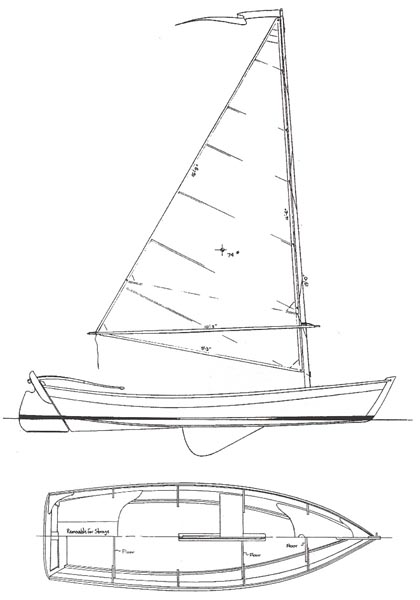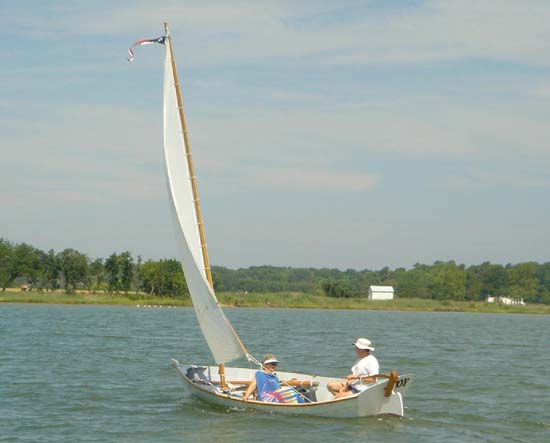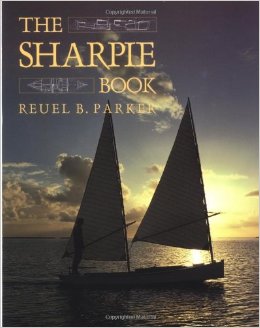
A 15ft Pram for Dinghy Cruising
20160601
20160701
20160711
20160801
20160901
20160915
20161201
20161215
20170107
20170113
20170114
20170119
20170120
20170122
20170123
20170131
20170208
20170219
20170220
20170221
20170224
20170225
20170318
20170328
20170329
20170408
20170409
20170417
20170420
20170421
20170422
20170423
20170424
20170425
20170426
20170427
20170501
20170509
20170521
20170525
<<
>>
20160901 |
|
Not having found a second-hand clinker-ply Ilur, I decided to design and build my own dinghy. As an Ilur was too complex, I played with the idea of a sharpie. So I bought The Sharpie Book by Reuel Parker. Compared to dories, sharpies have a flat wide bottom, have bigger rigs and are more stable. Sharpies are easy to build and fast. The smallest sharpies are 15 to 18 foot, but most are upwards of 20'. Flatiron skiffs are small sharpies. They are generally sailed with a single leg-o-mutton sail. Upwind they should be heeled with the chine pressed into the water. In this state, the sides and flat bottom form a 'V', which means there is less slamming. The long overhangs now create a longer waterline, all good for upwind performance. But are they good for dinghy cruising? With their long overhangs, small sharpies are going to be cramped. Big sharpies are just too much of a handful. Upwind they must be heeled to sail well. This means that you must maintain a delicate balance for long hours on end. A cruising dinghy must be stable, and more or less sail itself, especially when you are tired. I will continue my search.  20160901_sailingskiff_15.jpg  20160901_sailingskiff_15_photo.jpg  20160901_sharpiebook.jpg |